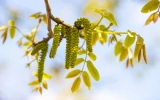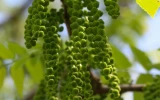How To Harvest Walnuts: A Detailed Guide
When you harvest walnuts from your own tree, you can appreciate the sustainability aspects of indulging in a homegrown, healthy snack. The walnut tree requires very little input from you, making it a low-maintenance yet highly rewarding tree to have in your backyard. This article provides a step-by-step guide to navigating every stage of the walnut harvesting process, from determining ripeness to storage.
To harvest walnuts, collect fallen nuts when the husks split open in late summer. Wear gloves, remove husks promptly, and spread nuts to dry until 10% moisture is reached before storage. Store the walnuts in a cool, dry place. Later enjoy cracking shells to eat the delicious nuts inside.
Below, you'll find the detailed process for how to efficiently collect ripe walnuts, remove husks without staining hands, properly dry and store your harvest, and enjoy the fruits of your labor.
Learning the skill of walnut harvesting is essential if you want to start a profitable walnut farm from the ground up. It will help you make the connection between planting your orchard and harvesting walnuts.
Summary
- Walnuts are ready to harvest when the outer husk starts to split open, revealing the green hull underneath. This usually occurs from late summer to early fall.
- To harvest walnuts naturally, wait for them to fall from the tree on their own once they are ripe. Shake branches over a tarp to collect the fallen nuts.
- The best way to pick up fallen walnuts is with a walnut rake, a leaf rake, or by hand while wearing gloves. Walnuts can stain the skin darkly. Empty collections frequently to avoid crushing.
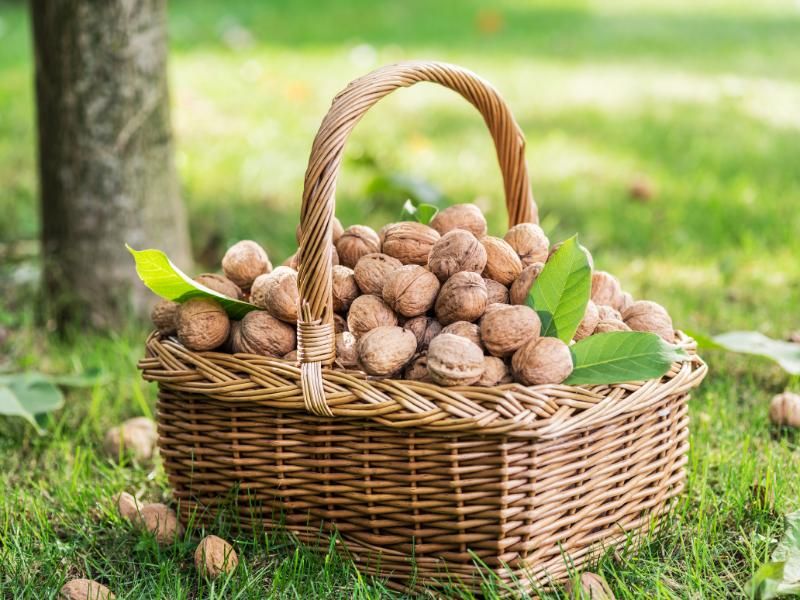
On this page:
Aside from their nutritional benefits, harvested walnuts can also be utilized in other ways:
- The shells can be used as a natural dye, giving fabrics a beautiful earthy color.
- Crushed shells make an excellent addition to your compost pile, as they break down and release nutrients back into your garden soil.
Steps to Harvest Walnuts
Shake the tree
First, you'll need to determine when to harvest the walnuts, which usually occurs in late summer or early fall when the outer green husk turns yellow and begins to split open. Once you've confirmed that your walnuts are ready for harvesting, put on gloves and other protective clothing, then proceed to gently shake the tree. The nuts from the highest part of your tree tend to ripen last.
Collect the fallen nuts
Use a tarp or cloth under the tree to catch and gather the walnuts more easily. It's important to pick up the walnuts promptly because leaving them on the ground for too long can result in mold or unwanted critters feasting on your harvest.
How many pounds of walnuts can you collect per tree? The answer can be found here.
Clean and dry the walnuts
Start by removing the husks by rolling them under your foot. Make sure you're wearing old shoes, since the staining can be difficult to clean. After removing the husks, start the drying process by following these steps:
- Spread the walnuts out in a single layer on a wire rack or screen. You can use a moisture meter to ensure the moisture content is below 10% before storing them.
- Place the rack in a well-ventilated area, away from direct sunlight, and ensure adequate airflow.
- Turn the walnuts daily to promote even drying, which takes about two weeks.
- To check if they are properly dried, give the nut a shake. A dried walnut will produce a rattling sound inside the shell.
Skipping proper cleaning can result in mold growth and poor quality nuts.
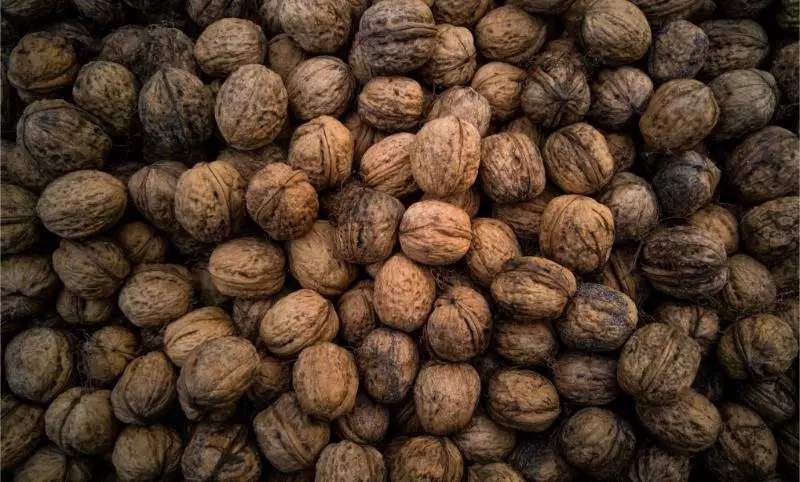
Materials Needed
Collection basket
You can use a variety of options, such as a large bucket, a gardening trug, or even a reusable shopping bag. Make sure the container is easy to carry and has enough room to hold the walnuts without overloading it. Some containers come with comfortable handles or straps for added convenience.
Gloves
Wearing gloves is crucial to protect your hands during the harvest due to the staining effect of tannins found in walnut husks. Opt for a sturdy pair that has some grip to make handling slippery walnuts easier. It's also a good idea to choose a pair that can be easily washed and dried afterward, as the staining can be persistent.
Tree shaker
Lastly, a tree shaker can be a useful tool, especially if you have a larger walnut tree. This device facilitates the release of ripe walnuts from the branches, making collecting them faster and more efficient. Some shakers are manual, while others are powered by gas or electricity. Manual tree shaking tools usually have a long handle with a hook or rake-like attachment at the end. For people with larger trees, a mechanical tree shaker may be worth the investment.
Best Time for Harvesting
The best time to harvest walnuts varies depending upon the variety and region they are grown in. Generally, walnuts are ready for harvesting from early September to early November, when the kernels are light in color and the membrane between the halves has turned brown.
Can you harvest walnuts every year? This article answers whether walnut trees produce nuts annually.
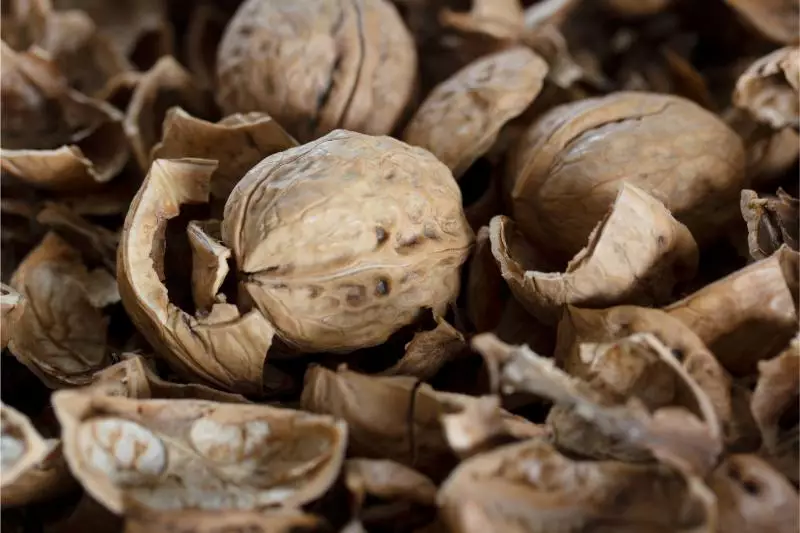
When it comes to harvesting black walnuts, they are typically ready to harvest between September and October in most of the United States. Black walnuts have a yellow-green husk that turns dark brown as it ages. When they fall to the ground, it's a sign that they are ready to be harvested.
One common mistake to avoid when harvesting walnuts is picking them too early. Walnuts are ready to harvest when the outer green husk turns yellow and begins to split open, which usually occurs in late summer or early fall. To avoid harvesting walnuts too early, keep an eye on the color and condition of the husk.
Identifying Mature Walnuts
Here are the key indicators to help you determine if it's time to begin your walnut harvesting:
| Indicator | Description |
|---|---|
| Husk color | Green to yellowish-green, splitting open |
| Size and shape | About two inches in diameter, round shape |
| Fallen walnuts | Occurs naturally in September and October |
- Husk color: The outer green husk of the walnut will turn from green to a yellowish-green as it ripens. When the husk becomes yellow and begins to split open, it's an indication the walnuts are ready for harvest.
- Size and shape: Mature walnuts will be approximately two inches in diameter, with a round shape. If you notice the walnuts have reached this size, it's another sign they are ready for harvesting.
- Fallen walnuts: A prime indication that walnuts are ready for harvest is when they begin to naturally fall to the ground. This usually occurs during the months of September to October, depending on your location.
Walnut Varieties and Harvesting Them
While the general harvesting steps are similar—collecting fallen nuts, removing hulls, drying—the process for harvesting walnuts is not exactly the same for all types of walnuts. The specifics vary depending on the thickness of hulls, timing of nut drop, and tendency of individual varieties. Here are some key differences by variety:
Black walnuts
The hulls are thicker and harder to remove than English walnuts. They also stain hands dark. Best removed while still green to avoid staining. When harvesting black walnuts, it's important to wear gloves to protect your hands. The husks surrounding black walnuts contain a dark dye called juglone that can stain skin for weeks.
For details on the maturation period of black walnut trees, check out this resource.
English/Persian walnuts
Hulls are thinner and come off more easily when dry. Can be left on the tree longer before harvesting without staining issues. English walnut trees are considered ready for harvesting when the walnuts inside their green husks reach their full size. However, the husks don't always open at the same time. Farmers have developed a trick to help the husks open in unison - they shake the tree trunk! The vibrations cause chemical changes in the husks that prompt them to split open simultaneously.
Northern California black walnuts
Hulls split open and release nuts earlier (Aug-Sept) than Eastern black walnuts (Oct). Easier and earlier harvest.
Heartnuts
Hulls split vertically down one side to release nuts. Nuts often drop before hulls open, so ground collection is common.
Japanese walnuts
Nuts grow in clusters inside green husks that must be removed. Timing is earlier in late summer.
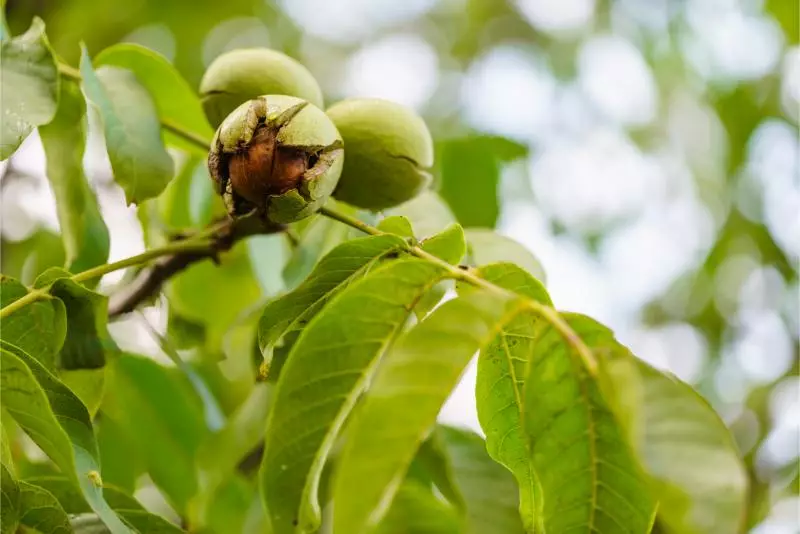
Can You Pick Walnuts Green?
Walnuts can be picked green, but with caveats. Green walnuts refer to nuts that are still in their early developmental stages, encased in a green, fleshy husk.
Why pick green walnuts?
Green walnuts are often harvested for specific culinary purposes, such as making pickled walnuts or walnut liqueur, where the softer, undeveloped nut and its husk are required.
In some cases, early harvesting can help prevent the spread of diseases like walnut blight, which thrives in the moisture retained by the husk.
Considerations before picking
- Timing: The optimal time to pick green walnuts is typically from late spring to early summer, before the shell inside the husk has hardened.
- Safety precautions: Wear gloves while handling green walnuts, as their juice can stain hands and clothes.
Harvesting Black Walnuts for Profit
Black walnuts, known for their robust flavor, are harvested not only for personal consumption but also for profit. Here’s how to effectively approach this:
- Familiarize yourself with the quality standards required by buyers, which often include nut size, shell integrity, and moisture content.
- Stay updated with current market prices to ensure competitive selling.
Harvesting techniques
The best time to harvest black walnuts is when the outer husk begins to soften and change color.
For large orchards, mechanical shakers can be used to efficiently harvest nuts.
Post-harvest processing
- Dehusk or remove the husks promptly to prevent flavor degradation.
- Proper drying is crucial to prepare the nuts for storage and sale, often requiring well-ventilated, dry conditions.

How to Harvest Walnuts by Hand
For small-scale growers or home gardeners, harvesting walnuts by hand is a viable and often preferred method. Here’s a step-by-step guide:
- Timing: Wait until the walnuts fall naturally or the husks are easily detachable from the nuts.
- Gathering: Collect the fallen nuts from the ground, using gloves to avoid stains.
- Dehusking: Remove the husks by rolling the nuts underfoot or using a dehusking tool.
- Cleaning: Wash the nuts to remove any remaining debris and husk residue.
- Drying: Lay the nuts out in a dry, well-ventilated area for a couple of weeks until the shells harden and the kernels shrink slightly.
Harvesting English Walnuts
English walnuts, with their smoother shells and milder flavor, require a slightly different approach.
Optimal harvest time
Visual cues: Look for splitting husks and a light brown shell color as indicators of maturity.
Harvesting process
- Shake the tree: Gently shake or tap the branches to dislodge ripe nuts.
- Ground collection: Pick up fallen nuts, preferably on a daily basis to avoid mold and pests.
- Dehusking and washing: Similar to black walnuts, remove the husks and wash the nuts.
- Curing: Allow the nuts to cure in a cool, dry place for several weeks.

When planning how to harvest walnuts, it's essential for you to be aware of the average pounds of walnuts produced per tree, as this knowledge will inform your harvesting technique and schedule to maximize your orchard's output.
How to Store Harvested Walnuts
First of all, make sure that your walnuts are thoroughly dried before storing them. Spread the nuts on a flat surface or mesh trays in a well-ventilated area, and let them dry for 1–2 weeks. Turn the walnuts occasionally to ensure even drying. Proper drying helps to prevent mold and extend shelf life. You can check if they are ready by shaking them gently; you should hear the kernel rattle inside the shell.
When your walnuts are fully dry, consider storing them in their shells, as it helps retain their freshness. For an even better storage method, use airtight containers or vacuum-sealed bags to prevent exposure to air and moisture. Place the containers in a cool, dark, and dry place, away from direct sunlight, such as a pantry or cupboard. Do not store them near strong-smelling foods, as walnuts can absorb odors.
Home-grown walnuts
Growing your own walnuts can offer you numerous health and environmental advantages. Let's take a brief look at some of these benefits.
-
Rich in nutrients: Walnuts are hands-down a nutritious choice. They are an excellent source of protein and provide omega-3 fatty acids which are extremely beneficial for the heart. Additionally, they can aid in promoting gut health and supporting brain function.
-
Sustainable and eco-friendly: When you grow your own walnuts, you can be sure that no harmful chemicals or pesticides have been used. This not only ensures healthier nuts for you and your family but also helps in preserving the environment.
-
Cost-effective: By growing walnuts at home, you can save money in the long run. Once established, walnut trees produce nuts year after year with minimal input required, making them a cost-effective and sustainable investment for your household.
-
Freshness guaranteed: Harvesting walnuts from your own backyard guarantees their freshness and quality. Picking them when the outer green husk turns yellow and starts to split open ensures that you're enjoying the highest-quality walnuts, full of flavor and nutrients.

